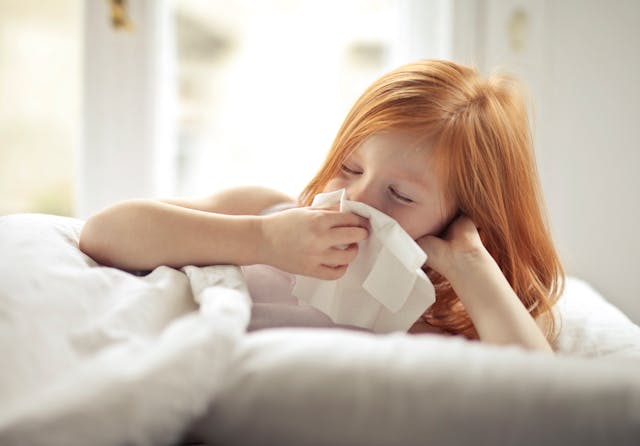Living with eczema can turn a child’s world upside down. Itchy, inflamed skin leads to constant scratching, disrupted sleep, and emotional distress that affects the whole family.
Childhood eczema affects about 20% of children worldwide, making it one of the most common skin conditions that parents and healthcare providers must manage. When combined with allergies, which often accompany eczema, the condition becomes even more complex and challenging to treat effectively.
Childhood allergy assessment and proper diagnosis are crucial steps in managing these conditions. Understanding the connection between skin symptoms and potential allergic triggers can help families develop better treatment plans and improve their child’s quality of life.
Understanding Childhood Eczema
Childhood eczema affects millions of young people worldwide, causing significant discomfort and disruption to daily life. This inflammatory skin condition can have profound effects on both children and their families.
Defining Eczema and Its Prevalence in Children
Eczema, also called atopic dermatitis, is a chronic skin condition characterized by red, itchy, and inflamed skin. It affects approximately 15-20% of children worldwide, making it one of the most common childhood skin disorders. Most children develop symptoms before age five, with about 60% showing signs during their first year of life. The condition often improves as children grow older, with many outgrowing it by adolescence.
Genetics play a significant role in eczema development. Children with parents who have eczema, asthma, or allergies face a higher risk of developing the condition themselves. Environmental factors like pollution, harsh soaps, and certain fabrics can trigger or worsen symptoms in susceptible children.
Identifying Symptoms: From Tears to Scratching
Eczema typically appears as red, dry patches on the skin that can become extremely itchy. In infants, these patches commonly appear on the face, scalp, and outer parts of arms and legs.
Older children often develop rashes in body folds, such as inside the elbows, behind the knees, and on the neck. The intense itching frequently leads to scratching, which damages the skin further and can cause infection. The “itch-scratch cycle” is particularly challenging. Scratching provides temporary relief but worsens inflammation, leading to more itching and potential skin infections.
Common symptoms include:
- Dry, scaly skin
- Redness and inflammation
- Intense itching
- Small, fluid-filled bumps
- Cracked, thickened skin from chronic scratching
Exploring the Connection Between Eczema and Sleep Disturbances
Sleep problems affect up to 80% of children with eczema, significantly higher than the general pediatric population. The primary cause is nighttime itching, which disrupts sleep patterns and leads to frequent waking. Children with eczema lose an average of 1-2 hours of sleep per night during flare-ups. This chronic sleep deprivation can impact concentration, mood, and school performance.
Parents also suffer, often losing sleep while trying to comfort their itchy, uncomfortable child. A study found that mothers of children with eczema lose approximately 1 hour of sleep per night during severe flares. Sleep disturbances create a vicious cycle: lack of sleep increases stress, which can trigger more eczema symptoms, leading to further sleep disruption. Proper eczema management is therefore essential for improving both skin health and sleep quality.
Read Also: Understanding Urologic Conditions In Children: A Parent’s Guide
Comprehensive Allergy Assessment for Eczema
Finding connections between allergic triggers and eczema symptoms requires thorough evaluation methods. Proper assessment helps identify specific allergens that may worsen skin inflammation and guides effective treatment strategies.
The Role of Allergens in Eczema Flare-Ups
Allergens play a significant role in triggering or worsening eczema symptoms in many children. Common environmental allergens include dust mites, pet dander, pollen, and mold spores. These substances can cause immune system reactions that intensify skin inflammation.
Food allergens may also contribute to eczema flares in some children. Common culprits include:
- Cow’s milk
- Eggs
- Peanuts
- Tree nuts
- Wheat
- Soy
Contact allergens like fragrances, metals, and certain fabrics can directly irritate the skin upon touch. Children with eczema often have a compromised skin barrier, making them more susceptible to these triggers.
Research shows that approximately 30-40% of children with moderate to severe eczema have identifiable allergic triggers. Identifying these specific triggers helps create targeted management plans.
Diagnostic Approaches in Allergy Testing
Several testing methods help identify potential allergen triggers in children with eczema. Skin prick testing involves placing small amounts of suspected allergens on the skin and observing for reactions. This test provides rapid results but may be difficult to perform on children with widespread eczema. Blood tests like specific IgE testing measure antibody levels against potential allergens. These tests are particularly useful when skin testing isn’t feasible due to severe eczema or medication use.
Patch testing helps identify contact allergens by applying patches containing suspected substances to the back for 48 hours. This method specifically detects delayed allergic reactions that may trigger eczema. Food elimination diets, supervised by healthcare professionals, can help identify food triggers. This approach involves removing suspected foods from the diet and slowly reintroducing them while monitoring symptoms.
Interpreting Results and Personalizing Treatment
Test results require careful interpretation by healthcare providers. A positive test indicates sensitization but doesn’t always mean the substance causes symptoms. Clinical correlation between test results and observed flare-ups is essential. False positives and negatives can occur in allergy testing. Multiple testing methods may be needed for accurate diagnosis.
Healthcare providers should consider:
- Test results
- Medical history
- Symptom patterns
- Exposure history
Treatment plans based on allergy assessment might include:
- Allergen avoidance strategies for identified triggers
- Skin barrier repair with appropriate moisturizers
- Anti-inflammatory medications to control symptoms
- Immunotherapy for specific allergies when appropriate.




